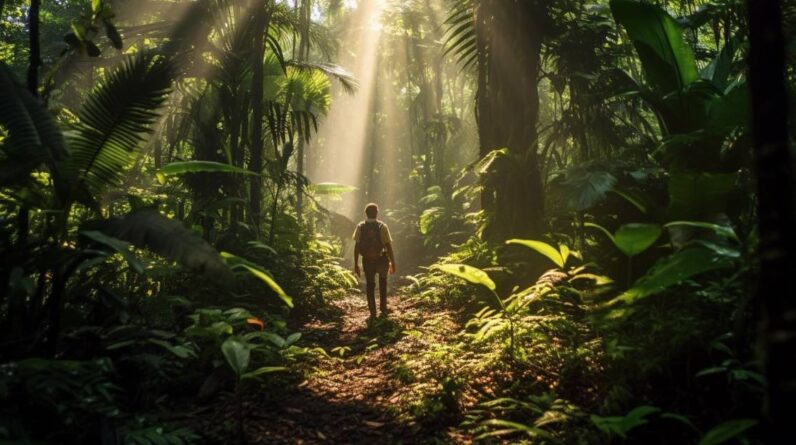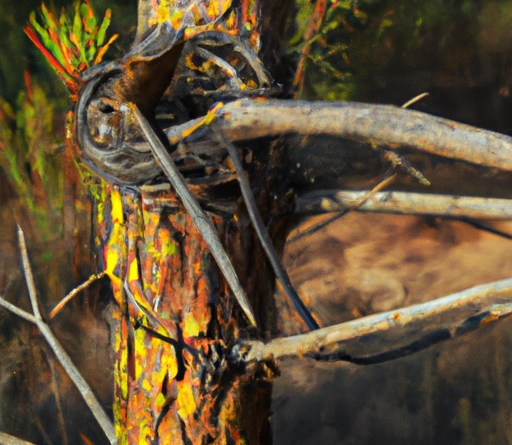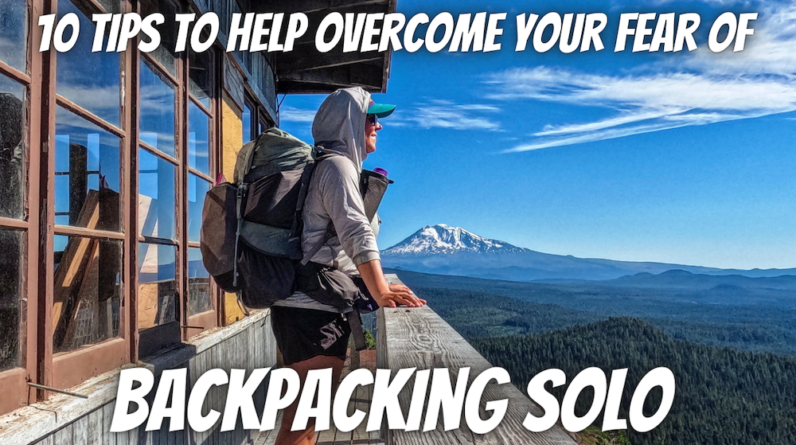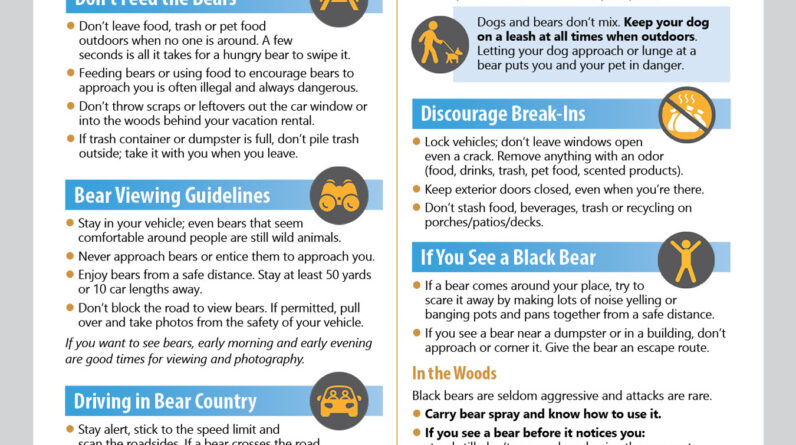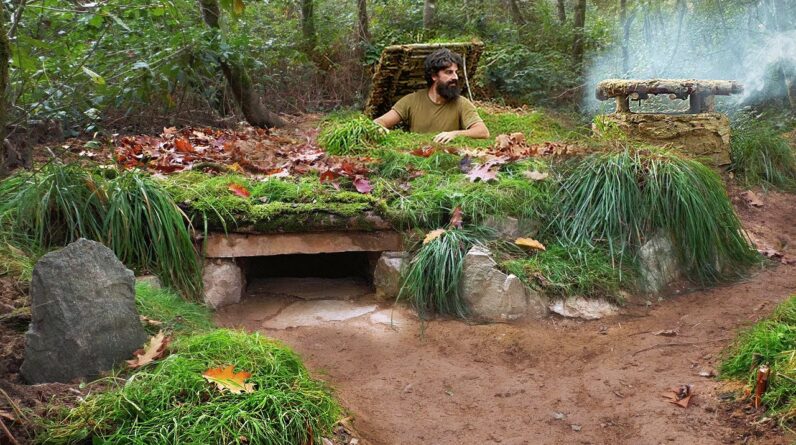
Building a Hidden Wilderness Campsite
Introduction
If you long for an adventurous escapade into the wilderness, building a hidden wilderness campsite is a brilliant idea. Picture this: a secure and secluded haven amidst nature’s beauty, far away from bustling crowds and the worries of the modern world. In this guide, we will delve into the concept of a hidden wilderness campsite, explore its advantages, and provide essential safety considerations to ensure your camping experience is both enjoyable and secure.
Understanding the Concept of a Hidden Wilderness Campsite
A hidden wilderness campsite essentially refers to a cleverly concealed camping spot, tucked away from prying eyes. It offers a sense of serenity and seclusion, allowing you to reconnect with nature in its purest form. Whether you choose to build your own shelter or utilize natural resources, the goal is to create a comfortable and discreet oasis that provides privacy and protection.
Advantages of a Secure and Hidden Campsite
The advantages of a secure and hidden campsite are manifold. Firstly, it offers enhanced privacy, shielding you from potential disturbances or unexpected encounters. Secondly, it allows you to immerse yourself fully in the natural surroundings, fostering a deeper connection with the wilderness. Moreover, a hidden campsite minimizes the risk of theft or trespassing, providing a sense of security.
Safety Considerations in Building a Wilderness Campsite
When building your wilderness campsite, it is vital to prioritize safety. Choose a location away from steep inclines, falling branches, or rocky terrain. Make sure to learn basic wilderness first aid and equip yourself with necessary emergency supplies. Additionally, practice Leave No Trace principles to preserve the environment and minimize your impact.
With a hidden wilderness campsite, you can indulge in the beauty of nature while enjoying the comforts of a secure retreat. So, gear up and embark on your unforgettable wilderness adventure!

Preparing the Site
Choosing a Suitable Location
When it comes to building a hidden wilderness campsite, choosing the right location is crucial. Look for an area that is far away from trails and popular hiking spots to ensure privacy. A secluded spot deep in the woods or near a body of water can provide the perfect setting. Keep in mind that the location should also have enough space to accommodate your campsite elements, such as tents and cooking areas.
Clearing the Area from Debris and Hazards
Before setting up your camp, it’s important to clear the area of debris and any potential hazards. Remove fallen branches, rocks, or any sharp objects that could potentially cause injuries. This will not only create a safer environment, but it will also make it easier for you to set up your campsite.
Creating Natural Barriers and Cover
To further ensure the hidden and secure nature of your campsite, consider creating natural barriers and cover. Use thick foliage or fallen trees to block the sightlines from prying eyes. By strategically placing vegetation around your camp, you can effectively camouflage it within the surrounding wilderness.
By following these steps and carefully preparing the site, you can build a hidden wilderness campsite that offers both security and seclusion. Remember, the key is to choose a suitable location, clear the area from debris, and create natural barriers and cover. Happy camping!

Constructing Basic Amenities
Building a hidden wilderness campsite requires careful planning and proper construction of basic amenities. From a sturdy shelter to a secure firepit and a reliable water source, these essentials will ensure your campsite is functional and comfortable.
Building a Sturdy Shelter
A sturdy shelter is essential for protection against the elements. Select a location that offers natural cover such as trees or rocks, and use these as the foundation for your shelter. Construct a frame using branches and logs, leaving no gaps for rain or wind to penetrate. Cover the frame with a sturdy tarp or waterproof material, securing it firmly to protect against leaks. This will provide a safe and comfortable space for sleeping and sheltering from the weather.
Setting Up a Secure Firepit
A firepit is vital for cooking and providing warmth during chilly nights. Dig a small pit in an open area and surround it with stones or rocks to contain the fire. Clear the surrounding area of any flammable materials and ensure proper ventilation. Always have a source of water nearby to extinguish the fire if needed.
Establishing a Reliable Water Source
Access to clean water is crucial for survival. Find a nearby water source such as a stream or river. Construct a filter system using materials like sand, charcoal, and cloth to remove any impurities. Gather water in clean containers and store them securely to avoid contamination.
By following these steps, you can construct basic amenities for your hidden wilderness campsite. Enjoy the serenity of nature while ensuring your comfort and safety.
Ensuring Privacy and Stealth
Strategically Placing the Campsite within Surrounding Terrain
When building a hidden wilderness campsite, choosing the right location is crucial. To maximize privacy and stealth, it is essential to strategically place your campsite within the surrounding terrain. Look for natural barriers, such as dense foliage or rock formations, which can provide a natural shield from prying eyes. Additionally, positioning your campsite away from popular trails or areas frequently visited by other campers will further ensure your privacy.
Camouflaging Structures and Equipment
To remain hidden in the wilderness, it is vital to camouflage your structures and equipment. Use materials that blend seamlessly with the natural surroundings, such as branches, leaves, and rocks, to disguise your campsite. Incorporate camouflage netting to cover tents, tarps, and other visible structures. By effectively camouflaging your campsite, you decrease the chances of detection by passing hikers or wildlife.
Minimizing Reflective Surfaces
One common telltale sign of a campsite’s presence is the reflection from shiny surfaces. To avoid detection, minimize reflective surfaces in your wilderness campsite. Choose matte finishes for equipment and keep shiny items, like cookware, securely stored when not in use. Additionally, avoid using glass materials and opt for lightweight alternatives like plastic or aluminum.
By thoughtfully considering the placement of your campsite, camouflaging structures and equipment, and minimizing reflective surfaces, you can build a secure and hidden wilderness campsite that offers the privacy and stealth you desire during your outdoor adventures. So, get ready to immerse yourself in nature’s embrace, knowing that your secret oasis is nestled discreetly within the wild.

Implementing Wildlife Safety Measures
When building a hidden wilderness campsite, it is essential to consider wildlife safety measures to ensure a secure and undisturbed experience in the wilderness. It is crucial to protect both yourself and the local wildlife that may inhabit the area. By implementing proper food storage techniques, avoiding attractants for animals, and using effective waste disposal methods, you can minimize potential encounters with wildlife and create a harmonious camping environment.
Proper Food Storage Techniques
One of the most important wildlife safety measures is storing your food properly. Keep all food items locked away in bear-resistant containers or hang them high on a sturdy tree branch using a bear bag. Never store food inside your tent, as the scent could attract unwelcome animal visitors. Furthermore, dispose of any leftovers properly and avoid leaving food scraps lying around your campsite.
Avoiding Attractants for Animals
To prevent animals from being attracted to your campsite, it is crucial to clean up after cooking and eating. Wash your dishes away from your sleeping area and ensure there are no food particles left behind. Also, avoid bringing scented items like fragrant lotions or perfumes that can attract curious critters. Being mindful of your surroundings and limiting attractants will decrease the likelihood of wildlife encounters.
Effective Waste Disposal Methods
Implementing effective waste disposal methods is vital for both the environment and wildlife safety. Carry biodegradable trash bags to collect your garbage, ensuring that all waste is packed out of the campsite. Never bury or burn your trash, as this can harm wildlife and disrupt the natural balance of the ecosystem. Leave no trace and leave the wilderness in the same pristine condition as when you arrived.
By utilizing proper food storage techniques, avoiding attractants, and practicing effective waste disposal methods, you can successfully implement wildlife safety measures while building your hidden wilderness campsite. Remember, respect for nature and its inhabitants are key to enjoying a peaceful and undisturbed camping experience.
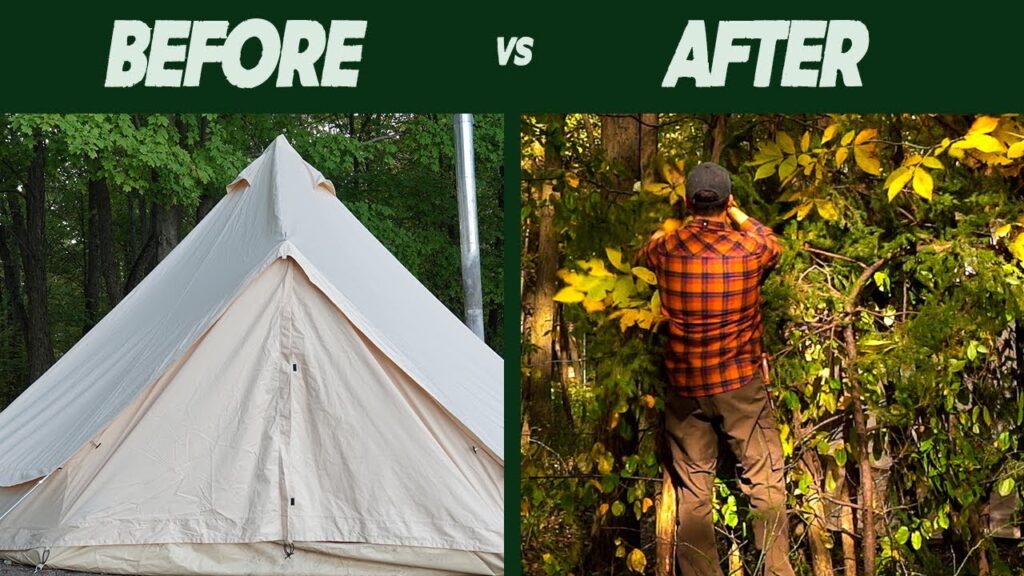
Navigating Stealthily in the Wilderness
Silent Movement and Reducing Footprint
When building a hidden wilderness campsite, it is crucial to navigate stealthily as to not attract any unwanted attention. Silent movement is key in order to minimize the risk of being discovered. Steer clear of branches and twigs on the ground, for they can crackle and give away your position. Instead, opt for walking on softer surfaces like forest floors covered in leaves or moss.
Reducing your footprint is also vital. Take long strides to avoid leaving noticeable tracks or scuffing the ground. Avoid stepping on any vegetation whenever possible, as broken grass or leaves could signal your presence to passersby.
Using Natural Landmarks for Orientation
In the vast wilderness, it is easy to become disoriented. However, familiarizing yourself with natural landmarks can help you maintain direction. Look for distinctive trees, large rocks, or distinctive mountain peaks as reference points. By noting these landmarks and creating mental maps, you can navigate through the wilderness with ease and without the need for a compass.
Appropriate Clothing and Gear Selection
Lastly, choosing appropriate clothing and gear is essential for your stealthy adventure. Opt for clothing in earth tones such as brown, green, or black, which blend well with the surroundings. Avoid bright colors that could easily catch the eye. Additionally, select gear that is lightweight and easily concealable, such as compact tents and collapsible chairs, to minimize your presence in the wilderness.
With these tips in mind, you can safely and inconspicuously build your hidden wilderness campsite, allowing you to immerse yourself in the serenity of nature without disrupting its delicate balance.
Leaving No Trace
Respecting the Environment and Ecosystem
When building a hidden wilderness campsite, it is crucial to leave no trace behind. Respecting the environment and ecosystem ensures that future campers can enjoy the natural beauty of the area. To achieve this, it is important to be mindful of your surroundings and the impact of your actions.
Firstly, choose a location for your campsite that minimizes the disturbance to the surrounding environment. Avoid nesting areas or fragile habitats to prevent disrupting wildlife. Additionally, refrain from cutting down trees or damaging vegetation in the area. By respecting the natural landscape, you maintain the ecological balance.
Properly Disposing of Waste
Ensure proper waste disposal to keep the wilderness pristine. Bring garbage bags with you and pack out all trash, including food waste. Dispose of it responsibly in designated receptacles or take it home with you. Never leave any waste behind, as it can harm wildlife and pollute the environment.
Preserving Natural Resources
Finally, preserve natural resources like water and firewood. Use biodegradable soap when washing dishes and avoid contaminating water sources. Collect fallen branches for firewood rather than cutting down live trees. Practicing sustainable camping techniques will help protect the fragile ecosystem and maintain the hidden beauty of your wilderness campsite.
building a hidden wilderness campsite requires a deep respect for the environment and ecosystem. By leaving no trace, properly disposing of waste, and preserving natural resources, you can enjoy the solace of nature while ensuring its longevity for future adventurers.

Conclusion
Building a hidden wilderness campsite offers numerous benefits to outdoor enthusiasts like yourself. Not only does it provide a secure and secluded space for you to enjoy the serenity of nature, but it also allows you to foster a deeper connection with the natural world and leave behind a minimal impact on the environment.
Enjoying the Serenity of a Hidden Wilderness Campsite
Imagine waking up to the melodious song of birds, surrounded by towering trees and the soothing sound of flowing water. Your hidden wilderness campsite provides the perfect refuge from the noise and chaos of everyday life. With no distractions, you can truly immerse yourself in the peace and tranquility of nature.
Fostering a Deeper Connection with Nature
By building a hidden wilderness campsite, you have the opportunity to develop a stronger bond with the natural world. Spend your days exploring the surrounding trails, breathing in fresh air, and observing the native flora and fauna. Connect with the elements and appreciate the beauty and power of nature in its rawest form.
Leaving Behind a Minimal Impact
One of the essential aspects of building a hidden wilderness campsite is ensuring that you leave behind a minimal impact on the environment. Follow leave-no-trace principles, respect wildlife habitats, and take care to properly dispose of waste. By doing so, you contribute to the preservation and sustainability of the wilderness for future generations.
In conclusion, building a hidden wilderness campsite offers a unique opportunity to seek solace in nature, deepen your connection with the environment, and leave behind only footprints. Embrace the serenity of a hidden wilderness campsite and create unforgettable memories in the heart of the wilderness.



